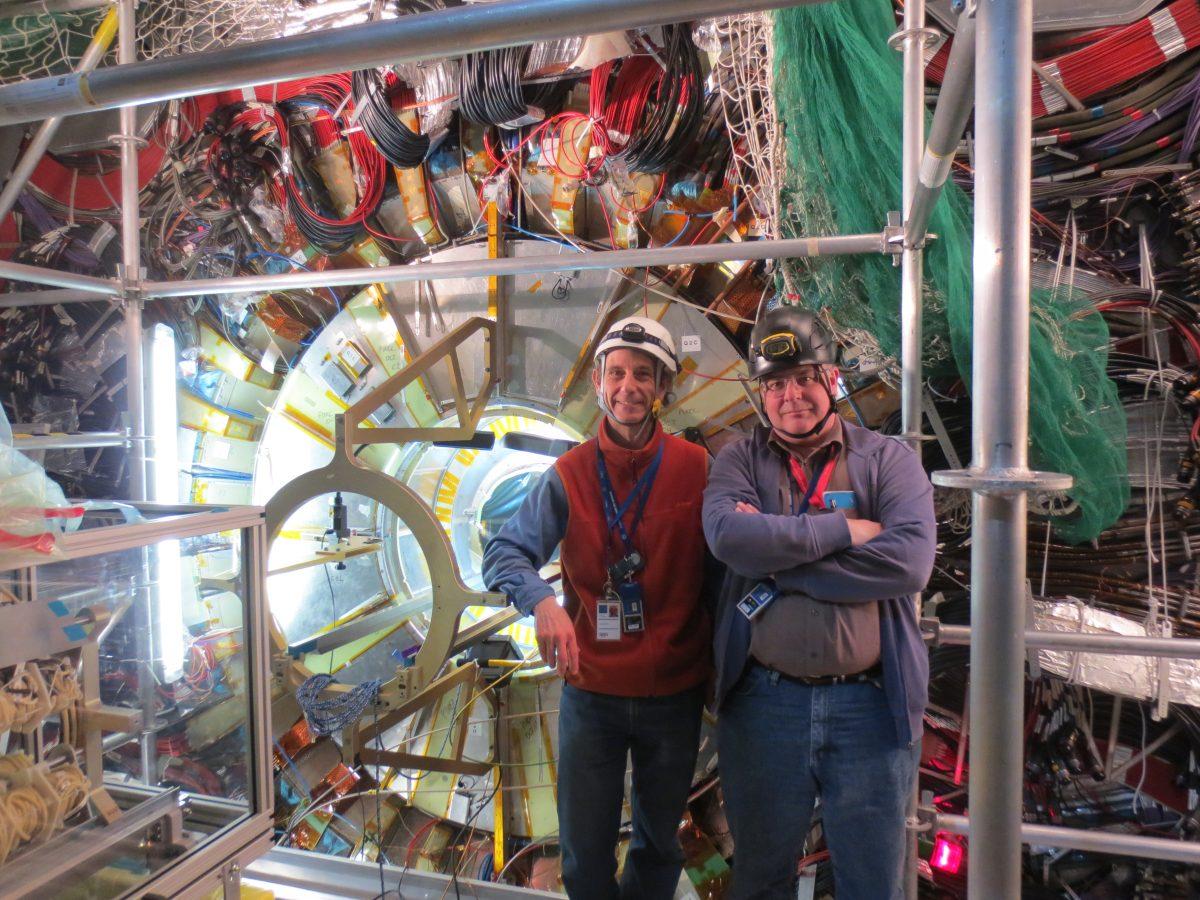Prof tasked with patching up Hadron collider in Geneva
When thousands of scientists in Switzerland proved the existence of the Higgs-boson particle in 2012, it was a milestone in scientific history.
Now, researchers from UTD are taking a role in continuing one of physics’ most prominent experiments.
Kendall Reeves, a research scientist with the physics department, is working as an operations manager for the ATLAS project, a particle physics experiment at the Large Hadron Collider at The European Organization for Nuclear Research, known as CERN, research facility in Geneva, Switzerland.
ATLAS is a large-scale project involving thousands of research scientists working to understand and make new discoveries concerning the Higgs-boson, a particle often cited by scientists as a missing link in understanding the composition of elementary particles.
The discovery of the particle was accomplished through the continued experimentation at the collider, a device that accelerates atoms and analyzes the various types of reactions between protons.
Physics professor Joseph Izen also works with the ATLAS project.
“The site of the Large Hadron Collider is truly vast. It facilitates the research of over a thousand researchers from around the world from the most esteemed physics institutes,” Izen said.
After the two-year maintenance period for the collider comes to a close soon, researchers from around the world will begin conducting experiments. The physics department is hoping to increase its contributions toward the community through research and development at the Large Hadron Collider, or LHC, site.
The department’s main goal is to aid the scientific community in the quest to prove the existence of dark matter, or matter that cannot be directly observed because it does not emit visible light.
“As research begins to ramp up at the collider in the next month or so, the opportunities for scientific advancement in the search for dark matter, which has been the goal of the LHC since its establishment, will become more fruitful,” Reeves said.
Izen and Reeves have made contributions to the operational capacity of the collider, not only through research and development, but also through substantial repairs that make research at the collider possible.
While Reeves was performing maintenance at the collider, he rearranged and repaired the physical components of the particle laser and deflector modules, which was heavily inhibiting research and development.
Students also have become involved with the community and have collaborated with world-class scientists at the collider.
Physics graduate student Harisankar Namasivayam worked alongside physics researchers at the collider site to observe the effects of colliding protons.
“After spending several months at the LHC, even today the vastness of the ATLAS experiment and its collective goal to find proof of the existence of dark matter in the universe is just astonishing,” Namasivayam said.











